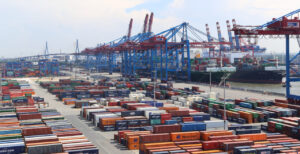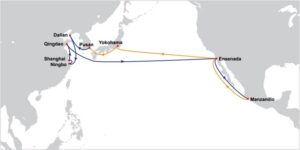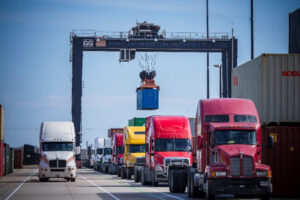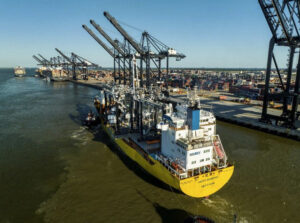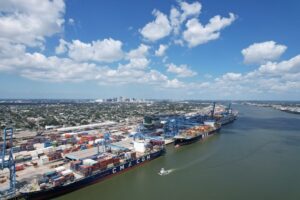Requirements from ports for lidar technology to monitor wind speeds has “grown rapidly” over the past several years, according to Vaisala.
“Ports are now targeting more efficient just-in-time (JIT) operations at increased safety level standards — while simultaneously digitalising their processes,” explained Mikko Nikkanen, Head of Maritime at Vaisala.
“The traditional methods for observing the weather — and the wind specifically — are simply not sufficient anymore,” he added.
“In addition to the real-time wind observations, terminals need to be able to nowcast the upcoming squalls and adjust their operations accordingly.
“While lidar technology has existed for decades, wind-specific lidars have developed tremendously over the past decade. Knowledge and expertise from the wind energy industry can now also be transferred into the maritime industry and ports.”
By creating a 20-km-wide observational ‘dome’ to monitor the port area, wind lidars offer real-time operational awareness of changing wind conditions.
But how does this help with JIT operations? It means that ports are able to assign earlier alerts for terminal operations and ships in the area when there is risk of heavy winds so that operations can be restarted more quickly after storms have passed, Nikkanen explained. Even a 15-to-30-minute loss to terminal operations can be a problem.
“Avoiding a catastrophic situation is priceless. A port’s reputation is truly in danger if it cannot assure safe operational conditions for all stakeholders,” he said.
Nikkanen told PTI that Vaisala’s wind lidar solutions are used every day in the roughest offshore conditions around the globe for wind resource assessments.
“Ongoing wind lidar research projects in the maritime industry (such as Windlass, driven by MARIN) are closely followed by the leading European ports. We are also working directly with dedicated ports to evaluate the best ways to improve their wind awareness capabilities by leveraging our wind sensors, lidar and wind nowcasting solutions.”
Recently, Vaisala released a new weather solution, Beacon, which enables easy plug-and-play connectivity for an extended network of weather sensors in the port area, according to the company. Sensors are then further connected into a cloud-based observation platform with an API interface.
In 2020 the company released its X-band weather radar, which could also be utilised for more accurate weather forecasting in the port area — and up to 100 km beyond.
“These remarkable milestones show that we are approaching weather challenges facing ports from multiple perspectives,” Nikkanen said.


